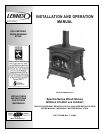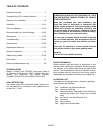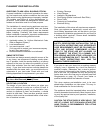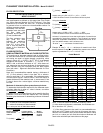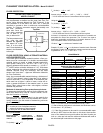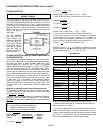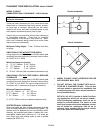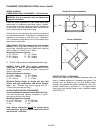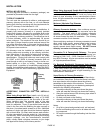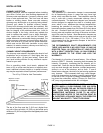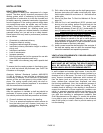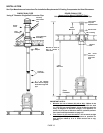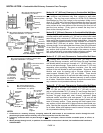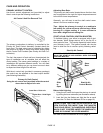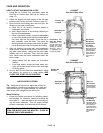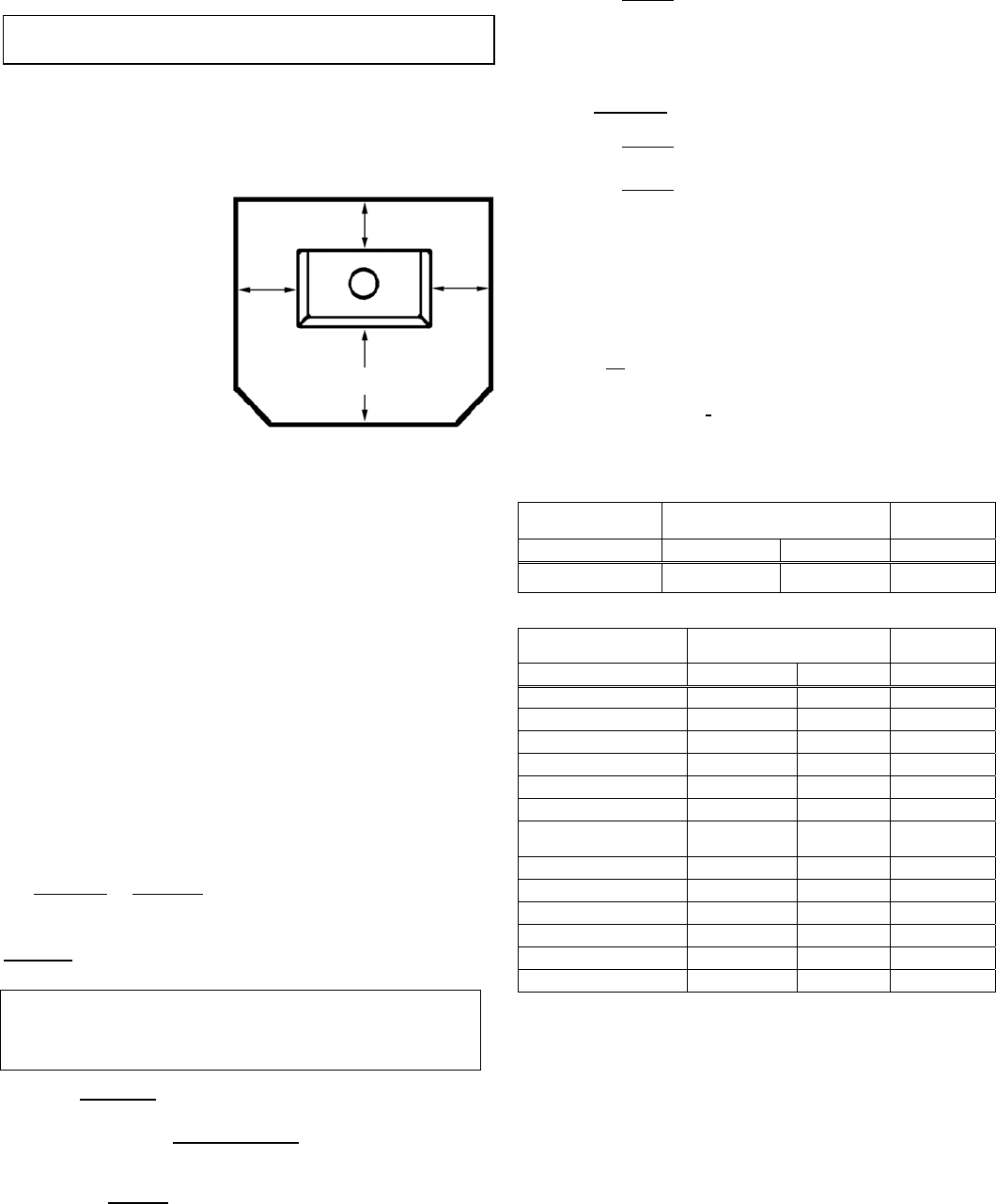
PLANNING YOUR INSTALLATION – Model CI1000HT
PAGE 5
Top View
FOR INSTALLATIONS IN THE USA
MODEL CI1000H
T
FLOOR PROTECTION
The floor protector must meet or exceed the minimum ther-
mal requirements as defined on this page (see Floor Protec-
tion Using Alternate Material As Floor Protector). If the floor
protection is to be stone, tile, brick, etc., it must be mortared
or grouted to form a continuous noncombustible surface. If a
chimney connector extends
horizontally over the floor,
protection must also cover
the floor under the
connector and at least 2"
(51 mm) to either side.
The floor protector must
fully cover the area
beneath the appliance
and extend 18” to the
front, 5.2” to the sides,
and 0” from the back as
shown in the illustration
to the right.
FLOOR PROTECTION
USING ALTERNATE MATERIAL AS FLOOR PROTECTOR
The hearth pad or alternate material used as a floor protec-
tor must be constructed of a durable noncombustible mate-
rial having an equal or better thermal conductivity value
(lower k value) of k = .84 BTU / IN FT
2
HR °F or a thermal
resistance that equals or exceeds r = 1.19 HR °F FT
2
IN/BTU with a minimum thickness of 1/2”. With these val-
ues, determine the minimum thickness of the alternate ma-
terial required using the formula(s) and the table shown
here (see chart – Approved Alternative Materials for Floor
Protection).
Note: Any noncombustible material having a thickness of
1/2” (13 mm) whose k value is less than .84 or whose r
value is more than 1.19 is acceptable. If the alternate mate-
rial used has a higher k value or lower r value will require a
greater thickness of the material used. In some cases, if the
k value is less or the r value higher, a thinner material may
be used.
Methods of determining floor protection equivalents:
To determine the thickness required for the alternate mate-
rial when either the k value or r value is known, use either
the k formula
or r formula:
Example: Durock Cement Board is to be used for the floor
protection. How thick must this material be? The following
formulas
give the means of determining minimum thickness
required.
T
M
= minimum thickness required for alternate material
k
M
= k value per inch of alternate material
T
L
= minimum thickness of listed material
r
M
= r value per inch of alternate material
Using the k formula
:
Desired Thickness k value of desire Minimu
of the alternate = material (per inch)
x thickness
material k value of listed of listed
material (per inch) material
T
M
(inches) = kM x T
L
.84
T
M
(inches) = 1.92 x 1/2”
.84
Answer using k: 2.286 x 0.50” = 1.143 = ~ 1 9/64”
1 9/64” thickness Durock Cement Board will be required.
Using the r formula:
T
M
(inches) = 1.19 x T
L
r
M
T
M
(inches) = 1.19 x .5”
.52
Answer using r: 2.288 x 0.50” = 1.143 = ~ 1 9/64”
1 9/64” thickness Durock Cement Board will be required.
At times it is important to know what combination of materials are
acceptable for use as floor protection. The “R values” are used to
determine acceptable combinations of materials because “R val-
ues” are additive where r and k values are not.
“R value” = 1
= r x thickness of material used
k
Example: “R value” = 1/k
= r x thickness of material used. Given
that the required “R value” for a suitable floor protector used must be
equal to or greater than:“R” = r x T
L
= 1.19 x .5” = .60.
Listed Material
Listed Material Thermal Values Listed Min.
Thickness
k (per inch) r (per inch) T
L
Listed Material → .84 1.19 1/2”
Approved Alternate Materials for Floor Protection (**)
Alternative
M
ate
ri
a
l
s
↓
Thermal Values * Minimum
Thickness
k (per inch) r (per inch) T
M
Kaowool M Board .47 2.13 * 1/2”
Micore 160 .35 2.86 * 1/2”
Micore 300 .46 2.18 * 1/2”
Durock Cement Board 1.92 .52 1 3/16”
Hardibacker 1.95 .51 1 3/16”
Hardibacker 500 2.30 .44 1 3/8”
Cultered Stone
Hearthstone
2.82 .35 1 11/16”
Wonderboard 3.23 0.31 1 15/16”
Face brick 9.00 0.11 5 3/8”
Common brick 5.00 0.20 3”
Cement mortar 5.00 0.20 3”
Ceramic tile 12.5 .08 7 ½”
Marble ~20.0 ~.05 11 15/16”
Note: To convert inches to millimeters divide by .03937.
(*) After minimum thickness is calculated, the thickness can
be no less than 1/2” (13mm).
(**) If the floor protector to be used is a noncombustible ma-
terial and is NOT listed on this chart on this page, the manu-
facturer of the material must provide either the listed k-value
per inch or r-value per inch and the minimum thickness will
need to be calculated per instructions on this page.
5.2"
(132 mm)
5.2"
(132 mm)
18" (457 mm)
0 "
(0 mm)



